What it's like to go on a K-drama pilgrimage with other hardcore K-drama fans
With the new season of Squid Game currently airing, a Korean American writer shares her experience of a group tour in Korea based on the popular streaming genre.
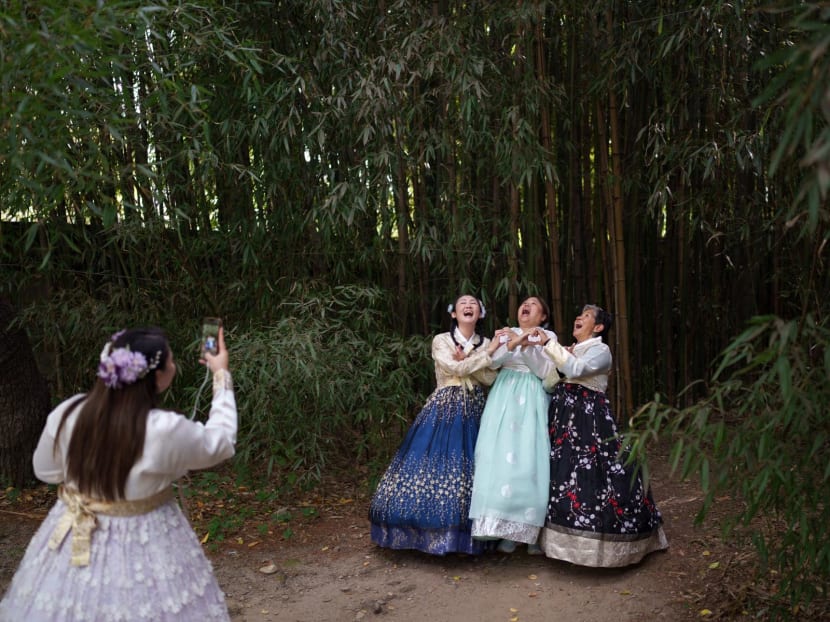
Wearing rented gilt-edged royal “hanbok,” traditional Korean dress in Jeonju, South Korea, K-drama fans cosplay a scene from their favourite show, The King: Eternal Monarch. (Photo: The New York Times/Chang W Lee)
My parents were both born in North Korea. The Korean War in the 1950s left them and 10 million other Koreans “ee-san gajok” – separated from their families. A move to the United States allowed them to start over and raise four US-born children in rural Minnesota.
They always avoided talking about Korea, and I mostly learned about the country on my own, through my research as a novelist, and during a year, decades ago, when I lived in Seoul, South Korea, as a Fulbright scholar.
With my father’s death and my mother’s final slide into dementia, I had an urge to reconnect with the country that’s still a mystery to me. I longed for a tour providing food and sightseeing, but with opportunities to find personal connection on the way.
K-dramas came to my rescue.
During my year in Seoul, I had been teased by the Korean Fulbright staff for my love of yeonsokguk, “serial dramas.” These lugubrious TV shows were usually the purview of at-home elders. I was in my early 30s. But family epics with emotive acting meant I could enjoy them even with minimal language comprehension.
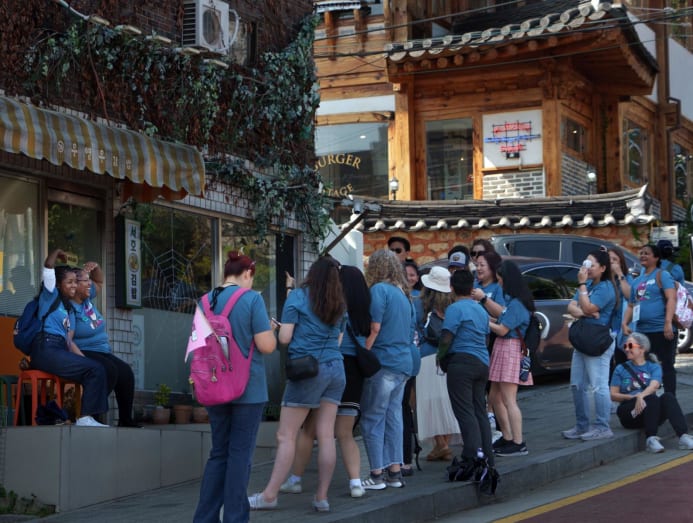
With the advent of streaming, the shows acquired subtitles and burst onto the global scene. In 2019, a week after its premier, Squid Game became the most viewed Netflix show in the United States, and would become the company’s most popular series of all time, with 330 million views to date. The second season, which started airing Dec 26, has been widely anticipated by fans around the world.
Currently, more than 80 per cent of Netflix subscribers – the streaming service reported 282.7 million globally, as of October – have watched Korean content. They have likely watched Squid Game or the zombie high school drama All Of Us Are Dead (Netflix’s ninth most popular non-English TV show of all time and one of my favorites), or Extraordinary Attorney Woo, a series about a kimbap-eating lawyer with autism that for 21 weeks made Netflix’s top 10 list for non-English shows.
In a nod to South Korea’s growing cultural power, the Oxford English Dictionary added kimbap and 25 other transliterated Korean words to its most recent revision. My beloved yeonsokguk officially entered the English language lexicon as K-dramas.
K-dramas and K-pop are driving interest not only in K-food, K-style and K-culture worldwide but also in tourism to South Korea. According to the Korean Tourism Organisation, 1.08 million US tourists visited Korea in 2023, up from a prepandemic number of 1.04 million in 2019. Preliminary 2024 data suggests a 30 per cent growth over 2023. The KTO, with the Ministry of Culture, Sports and Tourism, has been promoting K-culture tourism via campaigns like “Imagine Your Korea,” which feature Korean celebrities like Squid Game actor Lee Jung-jae and musical group BTS.
For travellers eager to visit shooting sites and experience the food they saw on their favourite shows, travel agencies such as InsideAsia, TNT, KimKim and Trazy are happy to help.
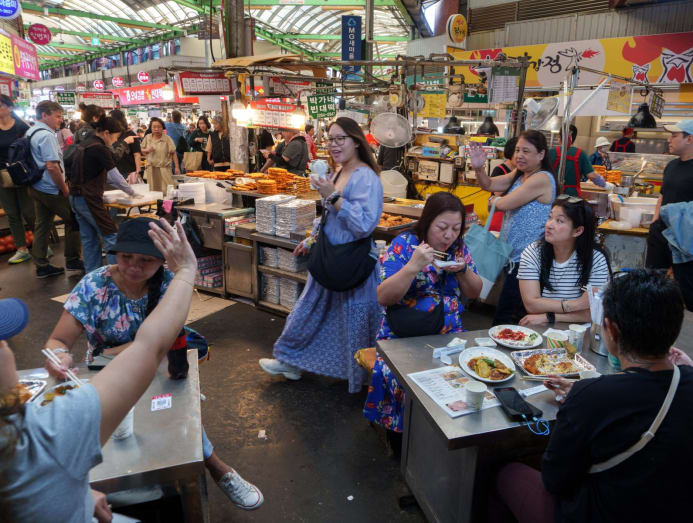
I settled on an eight-day Seoul-to-Busan tour called Meet You In Korea, organised by a Korean American, Jeanie Chang, a family therapist whose Instagram Noona’s Nunchi (“wise older sister”) account covers how K-dramas can illuminate mental health issues. In 2022, she posted images of her family’s trip to Korea, and receiving longing Instagram comments (including from me), she created the tour.
THE DIRECTOR YELLS "CUT!"
Our first foray was a ride on the Seoul subway, our cluster of English-speaking foreigners following a guide holding a flag in the Hongdae station. Since everyone else was in Korea for the first time (additionally, none had Korean heritage), this subway trip was utterly new. I had been in this station countless times, since it was near the university where I worked in 1998. Encountering its familiar, uniquely Korean sweet-savoury-briny scents from the underground snack stalls triggered a ghost feeling, like I might encounter my younger self pushing through the turnstiles with a bag of sweet potatoes, still steaming, in one hand.
But on this trip, I happily slipped into the role of tourist. Our group ranged from 20-somethings to retirees, everyone chattering excitedly about K-dramas. I remembered the name of one actress from my time in Korea, Choi Jin-sil, but didn’t know any current ones. My fellow tourgoers know the names of dozens of Korean actors and proudly showed me the spreadsheets on their phones cataloguing shows watched, rewatched, planned to watch; the numbers were in the hundreds. One woman shared she was new to K-dramas and had “only” watched 45 shows. Impressive.
Later that day, after our dinner at Koryo Samgyetang, a homey wood-panelled restaurant that specialises in samgyetang, a clay pot soup featuring tiny whole chickens stuffed with ginseng, the tour bus ferried us to Yeouido Hangang Park, a scenic urban landmark ubiquitous in K-dramas.
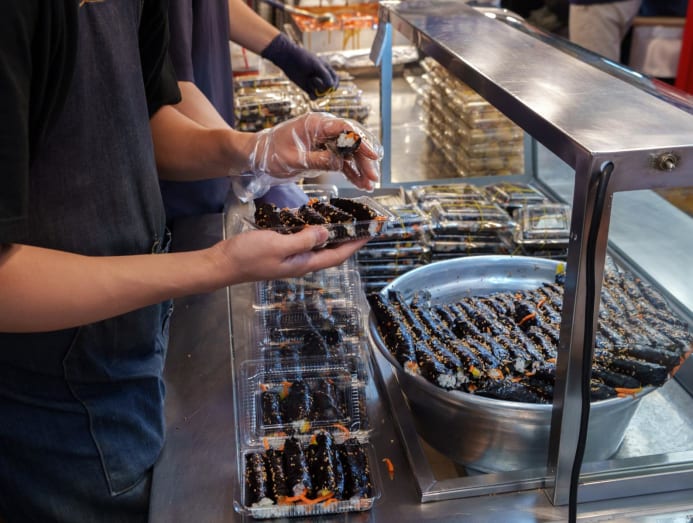
The Han River encircles Seoul. In 1950, when North Korea invaded, the then-president, Syngman Rhee, fled across the one bridge over the Han and blew it up behind him, leaving city residents like my father, a student at Seoul National University at the time, trapped. My father once overcame his taboo against speaking about the war to recall his fear and confusion hearing guns and tanks in the distance. A recording of the president on the radio assured people everything was fine and to stay home, but in the streets, people were running. No one knew what to do.
Now the Yeouido park is one of the most popular attractions in Seoul, its riverside path gently lit at night, washed free of its grim history. As we strolled by an underpass of a bridge (now one of many), a car careened out of nowhere, stopping inches from plunging over the bank. The director yelled, “Cut!” An actress stepped out of the car and blithely exchanged her stilettos for comfy slippers and walked off to rest.
We had stumbled on a real-time filming of a K-drama, Perfect Marriage Revenge, a perfect start to our trip.
A ROYAL ANCESTOR
From the electric freneticism of Seoul, we travelled to much quieter Jeonju, a UNESCO Creative City for Gastronomy, 130 miles (209 km) away. The regional specialty is bibimbap, a traditional dish with deep cultural roots that you might see K-drama characters eating in their homes. Here, we had made our own: Bowls of bap (rice) topped with bright vegetables arranged according to an ancient colour wheel.
All Korean schoolchildren know Jeonju as the birthplace of the Joseon Dynasty, Korea’s longest-running dynasty (1397 to 1897) and an era most often portrayed in saguk, K-dramas with historical themes. Many of these shows feature the Gyeonggijeon Palace, a national historic site that was once a stately shrine to Joseon’s first ruler, King Taejo. Tourist shops rented us gilt-edged royal hanbok, traditional Korean dress. Our group of noblemen and women then marched on to the shrine’s grounds along with other tourists and some Korean children on a school field trip.
For me, Jeonju was a second chance. My parents had visited during my Fulbright, but a trip to Jeonju was cancelled because it fell on Chuseok, Korean Thanksgiving, when the roads become impossibly clogged with cars. One reason we wanted to visit: An ancestor of my mother’s was King Taejo.
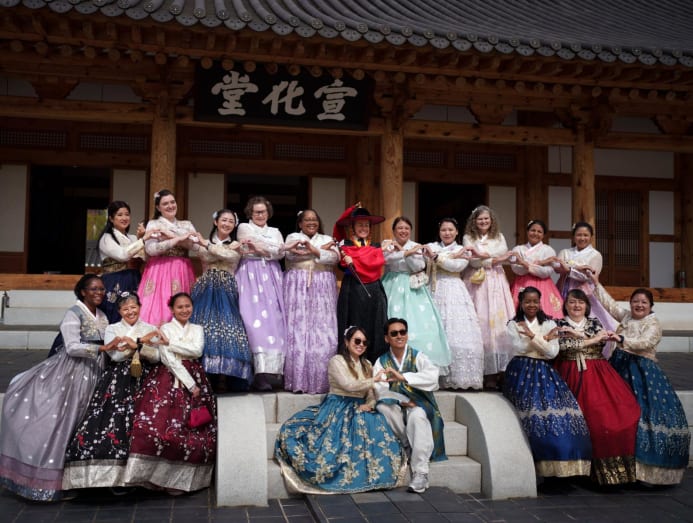
While the rest of the group cosplayed scenes from their favouritesaguks, I pondered how Gyeonggijeon translates to “a blissful land where a new dynasty originated.” I later gathered some golden leaves from a very old ginkgo tree, a gift for my mother from her ancestor.
FEELING UNDERSTOOD
I’d underestimated how seriously K-dramas had affected my fellow tourgoers. This trip was a pilgrimage of sorts.
AJ Maulion, 43, a project manager from Charlotte, North Carolina, has watched about 90 K-dramas. He said he wanted to “ visualise where the actors and crew crafted the storytelling that made me feel all the good vibes of the drama.”
He added that as a Filipino American, he appreciated the “accurate representations of Asian men as sexy, charismatic, emotional and strong main characters.”
I was surprised also that so many of the tourgoers said they felt “understood” by K-dramas, saying that the shows pulled them through hard times, even major depression, menopause and the death of a spouse.
On the longer bus rides, Chang showed K-drama clips on the bus’s screens, pointing out mental health strategies, like the self-soothing “butterfly hug” that appears in the K-drama It’s Okay Not to Be Okay.
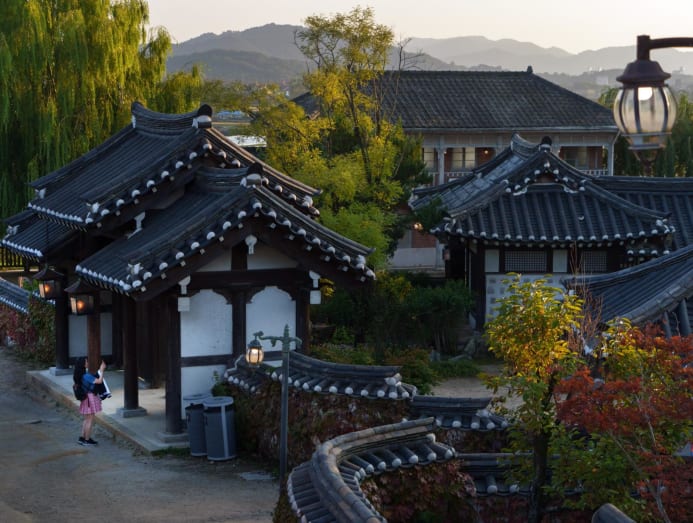
Whenever I got a chance, I asked South Koreans, in my dimly remembered Korean, their thoughts on K-dramas. Many said they didn’t watch them at all. I was realising K-drama tours are for non-Koreans who see Korea more as a curated array of purchasable commodities – a K-culture, not actual Korean culture.
Our last dinner was K-barbeque in Itaewon, the neighbourhood in Seoul portrayed in Itaewon Class. We had tourist-friendly beef and chicken, whereas Koreans would have just as likely been eating gopjang, intestine. This thought set off a craving for authentic Korean food, and the next day, our departure day, I found it in the alley behind the hotel.
The hole-in-the-wall restaurant served yukgaejang, a stew, slick with red chillioil and thick with fern bracken, worth much more than the US$7 (S$9.50) I paid for it. Afterward, I headed to the airport, feeling nourished in every way.
By Marie Myung-ok Lee © The New York Times Company
The article originally appeared in The New York Times.



